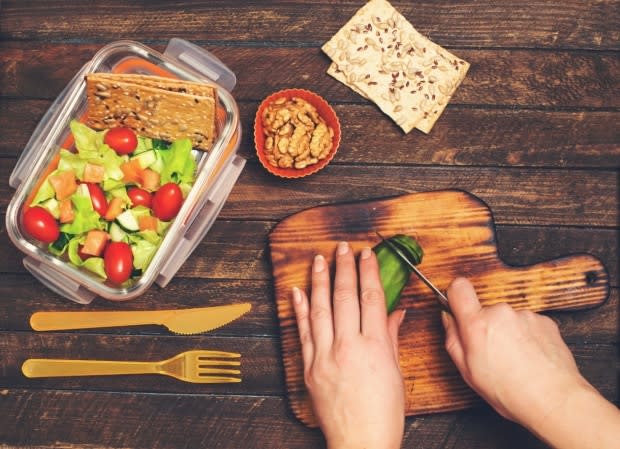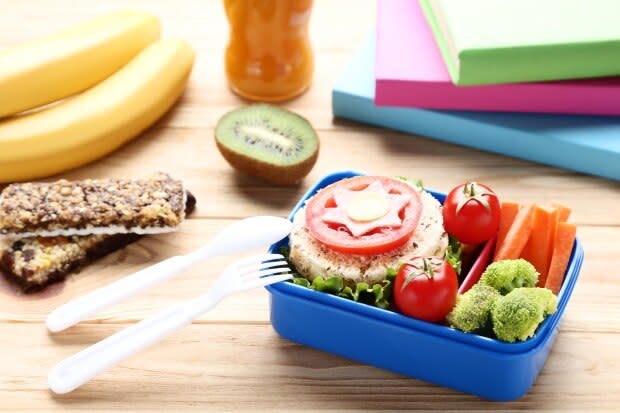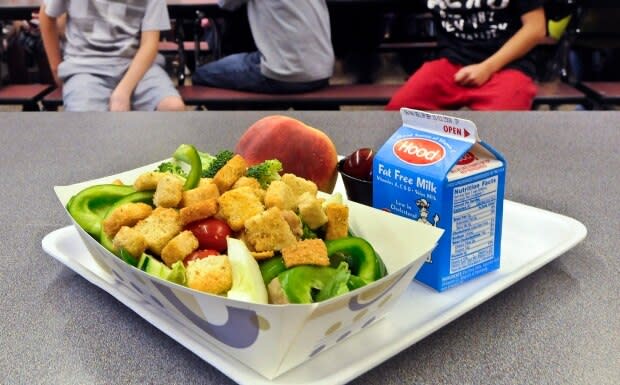6 tips for packing a school lunch your kid will eat
You open up your kid's lunch bag after school and there it is: the uneaten carrot stick, the sandwich with just one bite out of it, and the cheese string — warm and hardened on the edge — still half in its wrapper.
But those gummy bears? All gone.
Three weeks into the school year, parents might be at their wit's end on what to pack for their kid's lunches and snacks, that won't come back home at the end of the day.
Roxanne Laughlin, a community dietitian with public health and family nutrition, said it's one of the main challenges she hears from parents.

"I think initially, it's kind of like New Year's where everybody has best intentions off the get-go, and you know you've got things planned out and then about a week or two in, sort of the novelty wears off and the question is 'OK, so what do I make now?'"
Lunch programs, at a cost, are available at many Island schools.
Last November, the former Liberal government announced plans for a healthy school food pilot in nine Island schools. The aim was to get locally produced, healthy options in school cafeterias, using centralized kitchens.
After the spring election, the PC government put the program on hold. On Friday, a spokesperson for the Department of Education said "planning for the structure and delivery of the program is underway and we hope to be able to provide an update within the next few weeks."
For parents who prefer to pack their kids' lunches, here are some tips from Laughlin and registered dietitian Nancy Fong.
1. Be prepared

With both parents working in many households, time can be one of the biggest challenges in preparing lunches, Laughlin said.
"A lot of times it ends up being something that's done last minute as everybody is running out of the house," she said.
Laughlin suggests trying to plan the week's meals on the weekend when you may have more time.
"Pick a day, plan out some meals, figure out what everybody's schedule is. When does somebody have soccer? When does somebody have hockey? Is a parent working late one night? What are the days the family might be able to eat together and actually prepare a supper? And then maybe have leftovers that can go to lunch the next day."
Any work you can do the night before, such as washing or chopping vegetables, will also cut down on the morning chaos, she said.
2. Make healthy food fun

This is especially effective for younger kids, Laughlin said.
"When you're trying to increase their interests, sometimes using cookie cutters to shape breads or cheese or melon or things like that, so that things are in different shapes and fun."
They can be used to make themes, like pirates or rainbows, she said.
Kid-friendly skewers, perhaps using Popsicle sticks, is another way to present fruits and vegetables.
Bottom line, Fong said, is it's important children see lunches as an enjoyable time and not a meal they "have to eat."
3. Get the kids involved
Fong suggests getting each child to make a list of their top-10 lunches, and buy groceries according to the menu to cut down on cost and waste.
"Parents can use these to rotate over two weeks," she said.
Another way the kids can be involved, Laughlin said, is to look through the flyers for ideas and sales.
A "packing station" in the kitchen, with lunch boxes, cooler packs, baggies or small containers is another idea, she said.
"Getting kids to actually pack some of those ... teaches them a little bit of responsibility. It gives them a sense of accountability and autonomy."
4. Pack a variety of foods

Canada's Food Guide recommends a meal consisting of half fruits and vegetables, one-quarter protein and one-quarter grains.
Try not to avoid specific types of food, such as carbohydrates, gluten or dairy, unless there is a true food allergy or intolerance, Fong said.
"It not only limits food selection but also creates a negative attitude towards groups of foods."
5. Go beyond the sandwich
Some kids may not like sandwiches, but they'll eat all the individual parts of the sandwich on their own.
"Some kids just prefer to pick, as opposed to eating a whole sandwich," Laughlin said.
The solution? Pack the ingredients separately.
"So you have a little cherry tomatoes in one compartment. You have cube cheese in another, you have a couple of slices of bread in another container and maybe even some turkey or something in the last container," she said.
"You can actually mix that up a lot. You can have things that are a little more unorthodox."
She said using things like wholegrain or graham crackers paired with cheese cubes, baby carrots, applesauce and maybe dips like hummus or tzatziki is a good idea.
6. Don't eliminate treats altogether

The odd cookie a couple days a week or on a Friday isn't the end of the world.
Some parents are worried their kids won't eat anything at all if it's not something they like, Laughlin said.
"It's that sort of struggle between finding something healthy that you're not sure is going to be a hit and sending something that may not be as healthy, but you know that it's going to give them something."
Fruit cups and popcorn sprinkled with cinnamon or Parmesan cheese can make great snacks, she said.
There are plenty of recipes online for homemade energy snacks, using bananas, seeds, dates and maybe some chocolate chips.
More P.E.I. news

